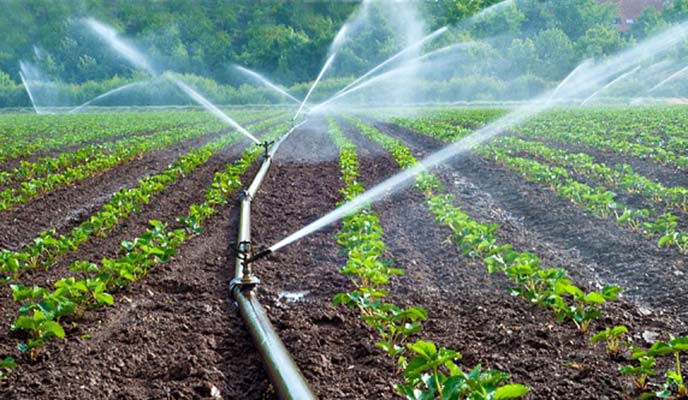Zimbabwe has in the past three years invested an estimated USD2- billion into dam construction, irrigation, and water management as the country escalated efforts to boost agriculture production.
This emerged after the Africa-Italy summit in January this year where President Emmerson Mnangagwa met with other leaders to plead the case for Zimbabwe’s development assistance. Zimbabwe has turned to irrigation to boost agriculture production amid concerns of poor infrastructure especially in the rural areas where the bulk of the country’s agriculture activities takes place.
The turn to irrigation investment will drive food production especially, with plans also afoot to repair and rehabilitate old irrigation infrastructure some of which was installed before the country’s independence more than four decades ago. According to the country’s president in an address to the Africa-Italy summit delegates, the multi-billion-dollar investment in water retention and conservation efforts is aimed at boosting food production. The country has made a special appeal to the Food and Agriculture Organisation (FAO) of the United Nations for assistance to transform the agriculture sector through world class water innovations.
Despite a mix of unpredictable rainfall patterns, poor infrastructure investment and maintenance, Zimbabwe has failed to harness rainwater for agriculture usage. The country has always realised the need to conserve water advising farmers on the importance of harvesting rainwater. But in the absence of large-scale water storage facilities, this has failed to cushion farmers against drought seasons. The construction of more dams is expected to address this challenge and provide a long-term solution, with the agriculture ministry committing to build small community dams across the country. Also expected to emerge from this is the construction of hydro power plants to be scattered across the country.
The FAO says: “Zimbabwe has one of the highest levels of water development for irrigation in the Southern African region.” Despite this, most of its irrigation potential is not realised, owing to the lack of development of irrigation systems and inadequate maintenance of installed irrigation schemes,” says the UN agency.
FAO says functioning irrigation schemes will allow year-round farming instead of limiting farming activities in Zimbabwe to be seasonal based on unpredictable rain patterns. In response to these concerns, the agriculture ministry announced last year that it was speeding up the construction of more than ten dams that may result in putting 350 000 hectares under irrigation by the end of next year. The ambitious program will also see the construction of mini-hydro power stations. That will alleviate the country’s rolling power outages which are also affecting farming activities.
Farmer unions have called for the government to exempt their operations from load shedding which sometimes lasts for more than twelve hours, effectively crippling production. In the absence of power, value-add industries within the agriculture production ecosystem have also suffered, prompting calls for investment in offgrid power generation.
According to Anxious Masuka, the Lands, Agriculture, Fisheries, Water and Rural Development Minister, the bulk of the dam and irrigation infrastructure investment will go towards supporting smallholder farmers. The Grain Marketing Board, a state owned entity says the bulk of the country’s maize is grown by smallholders, and supporting their agriculture activities is expected to turn around the country’s grain reserves.
“We have reviewed all the dams which are under construction. We then do irrigation schemes and develop water distribution systems for household use. That is rural development. We also develop fisheries and create electricity generation. We can then accelerate irrigation development,” Minister Masuka has said.
“When we started in 2020, we had 176 000 ha under irrigation. As we speak, we have about 200 000 ha under irrigation so we are making some progress, and the direction is good. We aim to have 350 000 ha under irrigation by 2025 which is why we have formed the irrigation development alliance. It is a caucus of a private sector and government players that have pledged to establish 100 000 ha using drip irrigation,” Masuka says.
To illustrate the scale and ambition of Zimbabwe’s irrigation push, more than 35 000 boreholes are going to be sunk across an equal number of villages. This irrigation and dam construction project is estimated to cost USD1,1-billion and added to what has already been invested since 2020, more than USD3- billion would have been spent by 2025. Whether those targets will be met is another matter, but it goes to show the lengths the government is willing to go to address agriculture production deficits that have stalked the country for years.









